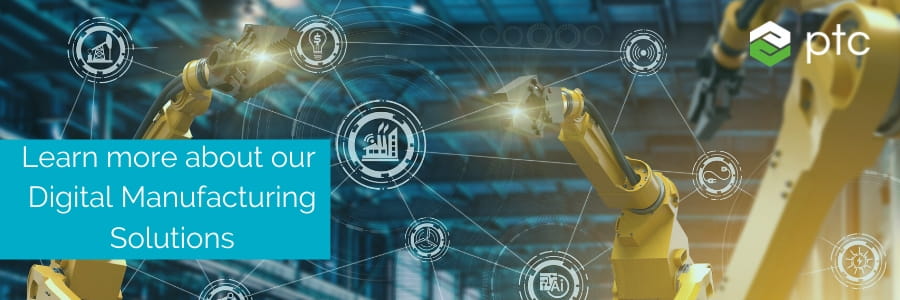5 Essential Software for Manufacturing
The modern factory is heavily reliant on software. Having undergone piecemeal digitization over recent decades, that software comes in a variety of forms—each with its own acronym.
This post will explain the essential types of software and explore how its role is changing in the context of Industry 4.0.
A breakdown of software for manufacturing
Digital manufacturing has emerged from a series of ad hoc innovations, giving rise to different software for every aspect of a modern manufacturing organization. However, at the heart of the modern factory are these five software systems.
SCADA
Supervisory control and data acquisition (SCADA) software was first introduced in the 1960s as a way of remotely controlling programmable logic controllers (PLC). It developed into a complex system capable of monitoring and controlling every digital process in factory operations. SCADA is used to remotely control machines via PLCs, but it is also the system through which machine sensors will alert managers to defects on a production line, for example.
ERP
Enterprise resource planning (ERP) software gives managers a detailed view of the organization’s resources, to better plan their acquisition and use. Data is collected from across the organization. Accounting, payroll, purchase orders, sales, and operations all feed data to the ERP system. Managers can then track business commitments against production to ensure the organization has everything it needs to fulfill orders, without overstretching its capabilities. As the manufacturing sector has accelerated, effective resource planning has become a cornerstone of the industry.
MES
Manufacturing execution systems (MES) track the transformation of raw materials into finished goods, with a view to optimizing the process. MES software can be seen as an intermediary between ERP and SCADA systems, joining the dots between the two—as well as other relevant systems, such as EAM (see below)—to identify areas for improvement in efficiency, productivity, and quality. Successful use of MES software can result in better OEE, increased uptime, reduced waste and rework, and more efficient use of inventory; among other benefits.
EAM
Enterprise asset management (EAM) software supports the maintenance, management, and use of physical assets—such as machinery—over their lifetimes. In contrast to computerized maintenance management system (CMMS) software—which focuses on managing the asset while in operation—EAM systems place the asset in the context of the entire enterprise, across its entire lifecycle. EAM is concerned not just with maintenance schedules, spare parts, and compliance; it also accounts for budget, finances, and HR.
PLM
Product lifecycle management (PLM) software tracks the journey of individual products from inception and design to completion and distribution. Doing so entails data collection from across the enterprise, including CAD designs, virtual prototypes, materials, manufacturing processes, orders, and delivery—among other information. By running a digital thread throughout the organization, iterative improvements can be made in the design, manufacture, and distribution of a product; decreasing costs, reducing time-to-market, and improving quality.
Software for manufacturing is changing
The history of software for manufacturing is of ad hoc development. Discrete systems designed to achieve specific goals. Over time, they have each increased in scope and begun to overlap with the functions of other systems. New technology is enabling these systems to more cohesively connect so that manufacturing software becomes a fundamental part of the organization, rather than an add-on. Manufacturers reviewing their software should aim for standardization, to enable integration across all their systems.
Software of Industry 4.0
The next phase in software for manufacturing is the facilitation of Industry 4.0 technologies and supporting the transition to new techniques. The boundaries between the systems outlined above have softened as they have evolved. However, manufacturers are beginning to see a paradigm shift in the depth of connection. The Industrial Internet of Things (IIoT) is bringing physical assets and processes into digital analysis and workflows, making them visible to software—and blurring the line between the digital and physical world. This, along with cloud computing, big data, and AI, is making it possible to connect the entire enterprise into a consolidated orchestration and analysis platform. The next phase in software for manufacturing, then, is one of convergence—joining the nodes between departments, functions, and processes.
